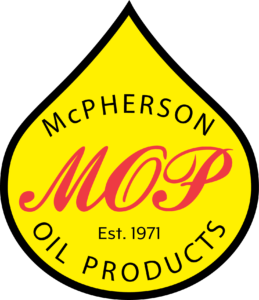Three tips to control leakage
18 Jun 2020, Posted by in Oil Tips As operators look to manage costs in facilities that are prone to leakage incidents, sometimes they turn to low-cost hydraulic fluids. Yet, this approach can lead to unwanted and even more costly results, including higher oil consumption rates and increased equipment wear.
As operators look to manage costs in facilities that are prone to leakage incidents, sometimes they turn to low-cost hydraulic fluids. Yet, this approach can lead to unwanted and even more costly results, including higher oil consumption rates and increased equipment wear.
These tips will also help to improve your maintenance program and associated costs.
Three tips to control leakage
In an attempt to manage costs, many companies that operate facilities that can have a high level of leakage incidents — particularly metalworking facilities and steel mills— will opt for low-cost hydraulic fluids. However, this can create a “double whammy” situation, causing companies to pay on two fronts: through increased oil consumption rates and reduced equipment life.
So how can you prevent leaks from draining your bottom line? The following steps will help you gain better maintenance control, yielding up to a 10 percent reduction in lubricant consumption.
- Track your systems:
Cataloging and labeling all major hydraulic systems can help accurately assess plant-wide capacity. By installing a metering device on lube storage tanks, you can measure and record the gallons delivered on each fill.
- Measure leakage:
After cataloging systems, establish a reasonable Hydraulic Fluid Index (HFI) baseline that can be used to measure actual cost savings. You can use the equation below to give you a consistent measure of leakage rates, independent of capacity, allowing you to track performance as equipment set-up changes:
HFI= Annual Usage or Total Fluid Used
Reservoir Capacity Total Site Capacity
Using this calculation, pinpoint the reservoirs with leakage problems. The average industrial plant has an annualized HFI of about 3:1, with the most efficient plants averaging ratios of 1:1.
- Schedule Inspections and Continue Monitoring HFI:
Once the high-usage units have been identified, schedule ultraviolet/ultrasonic inspections to identify the source of the leakage, which will help minimize the impact on production until repairs can be scheduled. Continue to monitor HFI over time and consider tracking “percent capture,” an indicator of lubricant volume used versus volume purchased. These efforts will help ensure you stay on target and reach your cost savings objectives.
If you need further assistance, please contact us. Our Industrial Services professionals believe in a partnership approach to improving the operation of your facility. We will meet with your facility management and maintenance personnel to establish goals, objectives, and timelines. We will work with your staff to document savings and cost avoidance. Additionally, we can conduct an annual business review for your plant lubrication needs to assist you with proactive maintenance plans.
*Article from Technical Help Desk with ExxonMobil’s Lube Talk
McPherson Oil, a family-owned and operated business, has provided the southeast with quality products and services since 1971. As a proud distributor of ExxonMobil products, we offer these services through our belief in TPM – Total Petroleum Management. Through our TPM program, McPherson brings a valued-added difference to its customers by meeting all of their petroleum needs. Our commitment to our customers is reflected in our company vision and mission statements. McPherson proudly services Alabama, Arkansas, North and Central Georgia, Mississippi coast, Florida panhandle, Greater Chattanooga Area, the Greater New Orleans Area, and Louisiana Gulf Coast.
